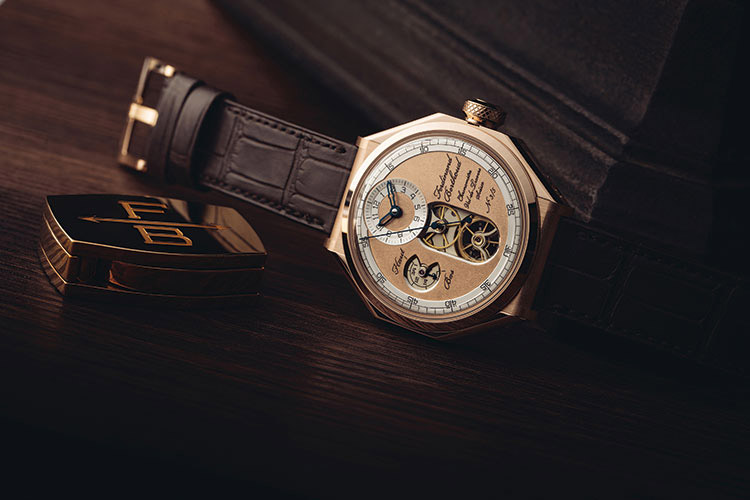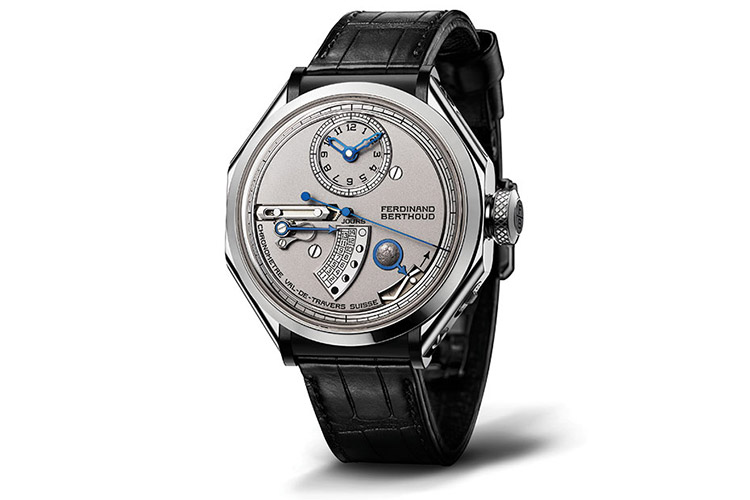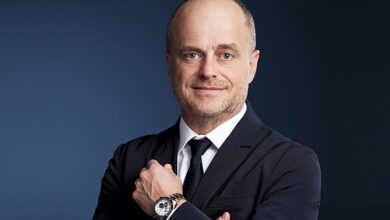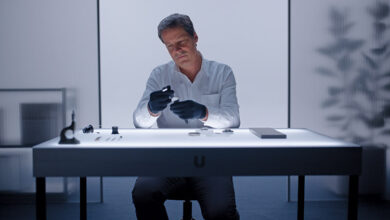Ferdinand Berthoud, a grand adventure
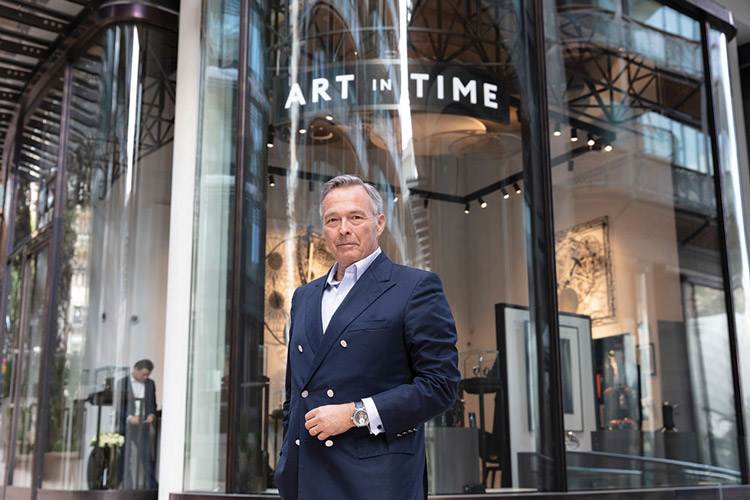
Ferdinand Berthoud Watches
Inspired by the fabulous creations of Ferdinand Berthoud, master watchmaker to the French royal court and to the French Navy, and watchmaking visionary of the 18th century, Karl-Friedrich Scheufele in 2015 decided to revive the name and ideas of this great watchmaker. Just a year later, the brand’s first offering, the Chronomètre FERDINAND BERTHOUD FB1 had won the highest horological accolade, the GPHG. This was followed by the FB 1R and later by the FB 1L. “Day & Night” sat down with the CEO of the marque Karl-Friedrich Scheufele for a chat…
How did the idea of starting a brand and reviving Ferdinand Berthoud come about?
Sometime after establishing our Manufacture in Fleurier, I introduced a museum that was based on a family clock-and-watch museum we had. I had expanded it over the years and we have different sections in this museum; one section was dedicated to precision, chronometers, marine chronometers, clocks and pocket watches. I am very fond of this section because every L.U.C watch is chronometer-certified; I was attending a lot of auctions and trying to complete the museum, and I came across this beautiful chronometer from Ferdinand Berthoud. I managed to acquire it, and then I started reading about the man and his biography. I realised he was born in a village close to Fleurier. His house is basically five minutes from our Manufacture.
Then I realised that there is a portrait of him in the next village, and he is a personality in his own right. He left his village at a very young age, went to Paris and became successful. Today, we would say that he made a huge career for himself. He became watchmaker to the King of France, watchmaker to the French Marine, and wrote thousands of pages of books to share his knowledge. I thought it would be interesting if I could pay tribute to this famous name and revive the name by making a modern wristwatch. I made another investigation 3-4 years down the road and ended up buying the name in 2006.
Was it hard for you to find information about Ferdinand Berthoud?
Not actually; we ended up with a few more pieces, which you can see in our stand at Baselworld. Very recently, we found the incredible Marine Chronometer No. 30, which has a huge history, and which came in its original wooden case.
Where did you find that?
I found it at another auction in New York. The person who originally owned the name was not sure of what he wanted to do. He thought that he would make a watch using an ETA movement; I thought that it would really not be the right thing to do when you own the Ferdinand Berthoud name. So, I persuaded him to sell me the rights to the name and then I shelved it for some time because I did not know how to tackle the project. Slowly but surely, I accumulated more and more information, and set up a little project team. We decided to define what the Ferdinand Berthoud wristwatch should look like.
As you were already a busy man, what was the reaction of your family when you told them that you were planning to launch the Ferdinand Berthoud brand?
It was a lot of work, but I did not think about the work; I was enthusiastic about the project and did not bother too much about the added workload. It was so exciting and we just decided to do it. Of course, they did ask about how much time all of this would take. But I assured them that it was a small project and we would make only a few watches a year and that this is a niche brand. In 2015, we were ready to launch the first watch, the FB1. The basic idea was that we took the Marine Chronometer movement with a fusée-and-chain arrangement, coupled it with a tourbillon, and miniaturised it to a great extent, so that you could actually wear it on the wrist. This sounds very easy but it wasn’t.
Where did you get the idea of creating a case that is so different?
The idea was that you would have an inner case that is a sort of a tube being protected by something else outside, which would be the wooden case around the chronometer. We wanted to replicate this in the watch. So, we have the round tube and the protective parts locked on to it, and held together with screws over the lugs. The nice thing is that although the watch is not a small one, it can easily be worn on a relatively small wrist because it sits very well. We really thought about every detail along the way, and this allowed us to build the portholes that allow you to look inside. You can see the fusée chain working; it is an all-round project where every detail is meaningful.
Unlike other brands, pricing is never prioritised in Ferdinand Berthoud and the focus is more on whether the finished product is to your satisfaction; can you comment on that?
We never decided that we would reach this price as a marketing-driven decision, and to reach this price, we would do a bit less of this and less of that. We decided that we would do the best that we can do and worry about the price later.
Was the team uncomfortable as they would have never worked this way before?
Yes, but if you have reached this level in watchmaking, with such finishing and watchmaking skills, and you can conceive such a movement, then you should not worry about limiting your finishings just to ensure that you reach a particular price point. Then you should not be doing a Ferdinand Berthoud watch, you should be doing something else. The FB1 watch has 1,115 parts and just doing the finishing on so many parts would be a tremendous job for a wristwatch.
How did you feel when you won the Grand Prix d’Horlogerie de Genève award for the FB 1 Chronometer in 2016?
It was totally unexpected because we had delivered maybe two or three watches by that time, and it was right at the beginning for our brand. We entered the watch in the Grand Prix d’Horlogerie de Genève, because it is a beautiful watch, and I thought we may have a chance of winning in the category – Mechanical Exception – we entered it. But I never thought we would win the “Aiguiile d’Or” Grand Prix itself. Obviously, I was over the moon and completely speechless.
The level of finishing in a Ferdinand Berthoud watch is extraordinary; your comments on that?
I agree with you; I was not aware that so many others knew about it, but I was very happy that the jury that year really appreciated all the work that went into that watch, and also all the difficult moments that went into this project.
The FB1 and the FB1R have the same case but the FB1R looks so different; how did you achieve this?
The FB1R probably looks like some of the Berthoud scientific pieces on a much smaller scale; it is very Berthoud-like.
How was the feedback for the FB1R as it is similar but also vastly different, in terms of design, to the FB1?
Because we have the hour indication in the small opening, we really had to review parts of the movement; it is not the same movement at all. It is actually the re-interpretation of an antique piece.
How was the reaction in the industry when you launched the FB1?
The industry was pretty surprised that we could come up with something that is so innovative and so meaningful, and yet was historically correct. We wanted to pay tribute but we did not want to just reproduce some thing that was already done, or do a nostalgic piece that is a copy of something we have in our museum. It is actually the interpretation of a concept that we imagined that Berthoud would have done.
When I first saw the FB1, I felt that you were not expecting to make money out of this venture and that it was more of a project of passion; is that so?
The mission of the team was that we do not cut any corners; we were not asking them to minimise the time they spend on whatever component they were working on; we were not asking them to rationalise or cut corners. We were asking them to do the best they can within the category, no matter what.
How are you able to balance the demand that you get from your points of sales worldwide with the limited number of watches you are able to make?
We now have nine points of sales, including the Art in Time gallery that I opened in Monaco, where we currently have three pieces, which is exceptional. We have delivered around 50 pieces so far and we have around one year of production on order by March 2019. The attention to detail that we apply does not allow us to speed up production; that is not the idea. The idea is to do whatever piece we have on order in the best possible way. Basically, there are three watchmakers involved and it has never been the idea to maximise the number of pieces made in one year.
Is it true that you know all the people who have bought a Ferdinand Berthoud watch?
Not really; I do know some of the people, but there are others who bought it at some point of sale, such as Singapore and I have no idea who the proud owner today is. It is true that I was personally involved in the first roadshows, the exhibitions, and the collectors’ dinners we had. It was very revealing to me because it is a bit like entering another watchmaking world.
What was the reaction of collectors the first time they saw a Ferdinand Berthoud watch?
It was very often a mix of surprise and fascination, and also trying to get a grip on what they are seeing. The set-up, the functions were totally out-of-the-box, and that is what Berthoud was all about, more than 200 years ago.
What are your plans for the brand in the future, given that Ferdinand Berthoud as a brand has achieved very high visibility in such a short span of time?
You may feel that way because you know the industry so well, but there is still much to be done in terms of visibility, but I am very happy to hear that you perceive it that way. In terms of projects, we have additional projects with this current calibre. We are also working on a second calibre, with which we once again hope to surprise everyone, because the underlying philosophy is chronometry and precision; what we are trying to achieve here is experimental so it will be interesting. So, we have a roadmap established for the next five years. As we go, we come up with new ideas and we have to finish what we start, but it is a great adventure. It is like the Berthoud chronometers taking off to new parts of the world
